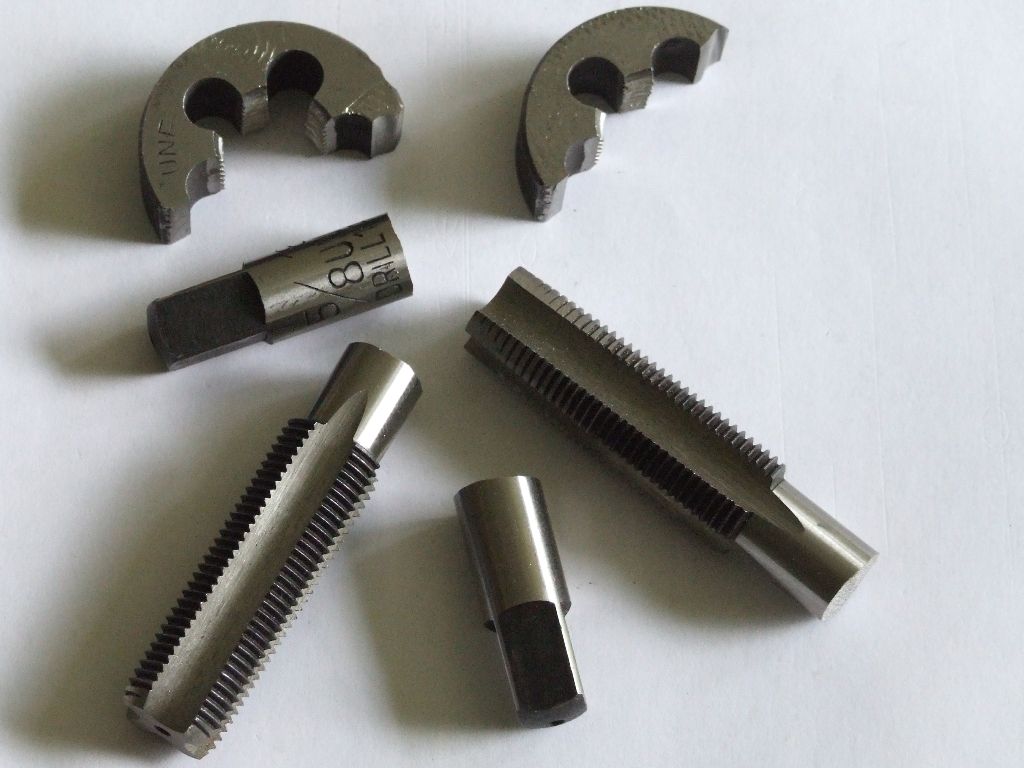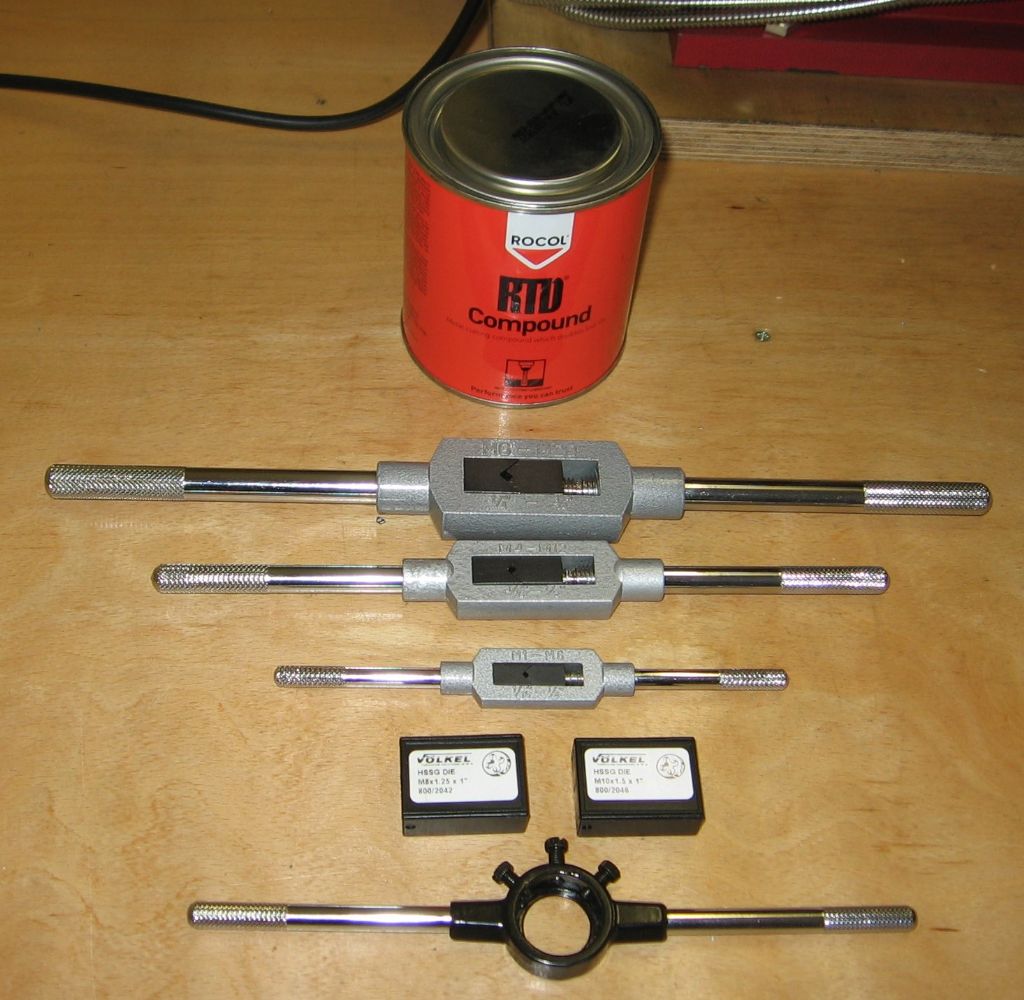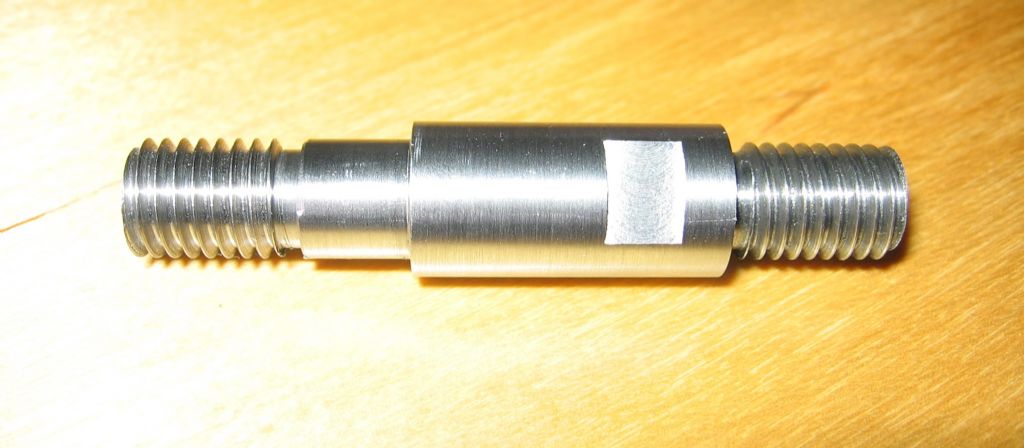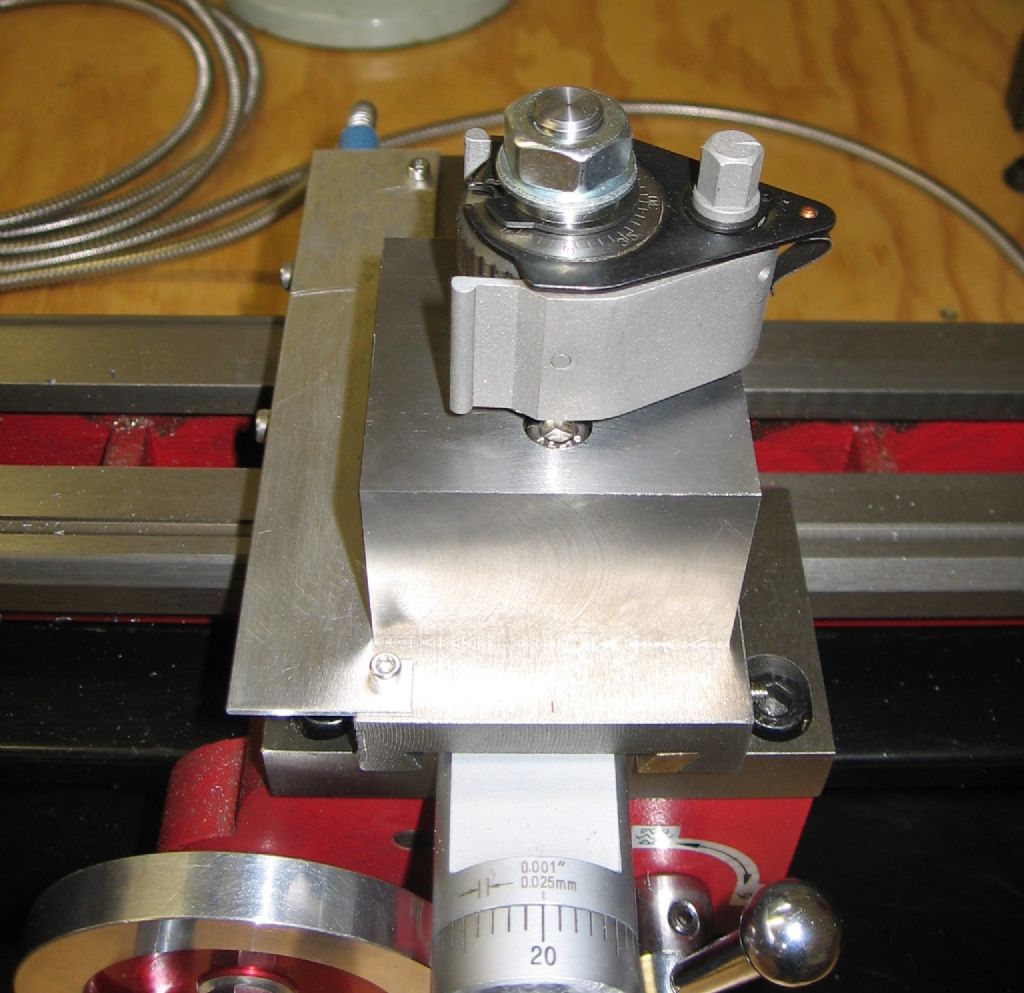Reading all the comments, It appears that the workholder er collet is very good,these collets grip and dont slip if tightened to spec, the material ie 1a leaded should produce good threads easily without the need for specialised lubricants ,the commercial die holder looks ok though I would prefer the type where the body holds the die firmly,i am not keen on separate inserts. the 45 degree lead is ok on this material a 30 degree is preferable on tougher materials. I think the problem is a rubbish die,it may be marked hss but its the manufacture thats the problem.Get a good ground thread hss die from a known manufacturer and the problem will disappear. Cutting a thread by hand with the work in a vice is difficult and takes a lot of practice and is to be avoided. Holding the die in the tailstock is the easiast method to cut a thread for the amature modeler, modern commercial tallstock holders are a bit too complicated and cost a lot of cash. During my training I spent a lot of time on a Boxford, the commercial tailstock die holder was simple, short length of 1/2 inch dia rod,possibly hardened to reduce wear was held in the tailstock chuck,the die holder about 4 ins long just slid onto the rod,no key ways or any method to prevent rotation, it had a heavy knurl along most of its length and a cross hole for a tommy bar , the die was held and adjusted by the usual 3 pointed screws. In use BA threads were cut with the lathe running and the holder gripped in the hand and pushed towards the work,when a shoulder was reached you just relaxed your grip on the dolder and then spun it off by hand ,on larger threads the tommy bar was used with the lathe spindle stationary. This type of holder can be home made using either mild steel or aluminium for the body and silver steel for the rod thatgoes in the tailstock chuck,no need to make morse taper shafts. I have a lot of these home made holders which cost nothing ,the largest holding 3/4 bsp as I thread water pipe when restoring full size stationary engines,I thread under power using a decent sized tommy bar which is prevented from turning by a steel bar held in the toolpost,Dont use the lathe bed.When I started my engineering work over 60 years ago ,there was never any problem with either carbon cut thread or hss taps and dies,though in the last 30 years i have sent a die and a number of taps back to suppliers as they would just not cut ,with duff taps some just start cutting and then just jam solid.Nowadays I rarely need taps or dies but if I do have to buy one I bite the bullet and pay a lot extra for ground thread HSS. A comment was made about why does a toolpost stud need to be relatively precise,well the nut needs to be square to the axis of the stud in order to maintain a firm grip. How would I do this stud,both my lathes have imperial lead srews so I would use a die , if it was imperial over say 1/2 inch i would screwcut with a chaser.
I only use die holder and vice for jobs like extending the thread on coachbolts or cleaning up damaged threads, I have a WD set of whit taps and dies 1/2 to 1 inch whit made in 1940 and typical goverment,no expense spared,solid metal case with hard timber insert in army green, a polished all over sliding block tap wrench and a die holder which has separate iserts to hold the dies,so the dies can be set to size and the setting held,each die holder has a built in guide to keep the thread square ,though it would take a strong soldier to cut one inch Whit threads ,it cost me £40 and I think the tap wrench alone was worth that as that is the most used part of the set.
 File Handle.
File Handle.







